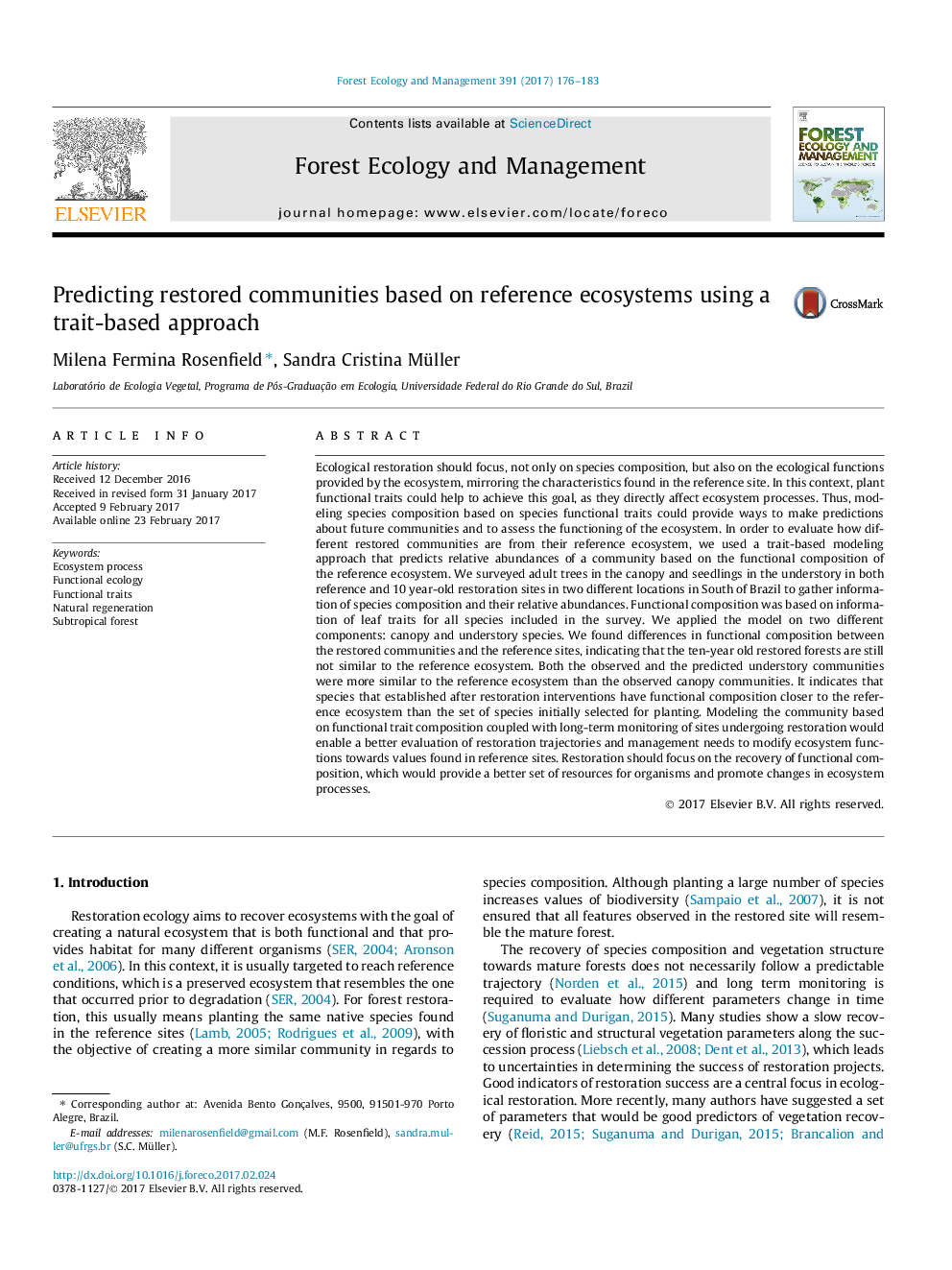| Article ID | Journal | Published Year | Pages | File Type |
|---|---|---|---|---|
| 6459415 | Forest Ecology and Management | 2017 | 8 Pages |
â¢We use a trait-based model to monitor functional composition in restored forests.â¢The 10-year old restored forests were functionally distinct from preserved forests.â¢The restored understory was closer to the reference forest than the restored canopy.â¢Species that arrived after planting may contribute more to functional composition.â¢This modeling provides a tool for evaluating trajectories and management needs.
Ecological restoration should focus, not only on species composition, but also on the ecological functions provided by the ecosystem, mirroring the characteristics found in the reference site. In this context, plant functional traits could help to achieve this goal, as they directly affect ecosystem processes. Thus, modeling species composition based on species functional traits could provide ways to make predictions about future communities and to assess the functioning of the ecosystem. In order to evaluate how different restored communities are from their reference ecosystem, we used a trait-based modeling approach that predicts relative abundances of a community based on the functional composition of the reference ecosystem. We surveyed adult trees in the canopy and seedlings in the understory in both reference and 10Â year-old restoration sites in two different locations in South of Brazil to gather information of species composition and their relative abundances. Functional composition was based on information of leaf traits for all species included in the survey. We applied the model on two different components: canopy and understory species. We found differences in functional composition between the restored communities and the reference sites, indicating that the ten-year old restored forests are still not similar to the reference ecosystem. Both the observed and the predicted understory communities were more similar to the reference ecosystem than the observed canopy communities. It indicates that species that established after restoration interventions have functional composition closer to the reference ecosystem than the set of species initially selected for planting. Modeling the community based on functional trait composition coupled with long-term monitoring of sites undergoing restoration would enable a better evaluation of restoration trajectories and management needs to modify ecosystem functions towards values found in reference sites. Restoration should focus on the recovery of functional composition, which would provide a better set of resources for organisms and promote changes in ecosystem processes.
